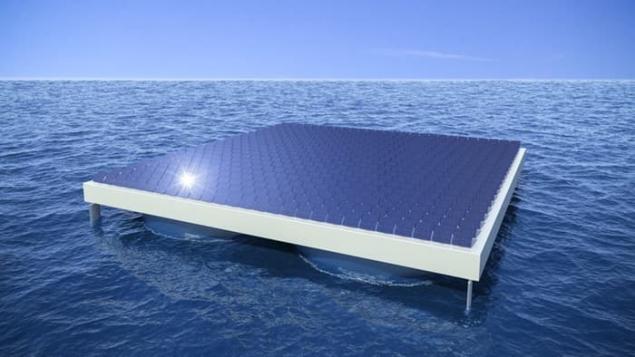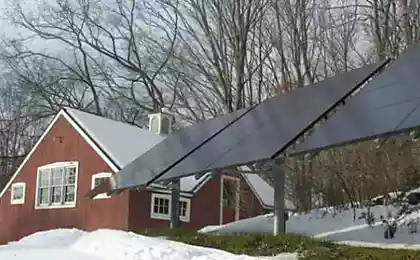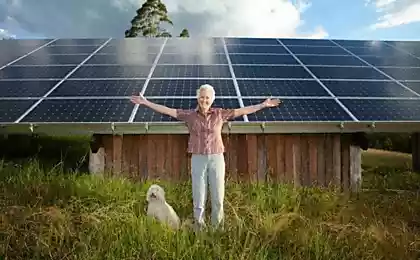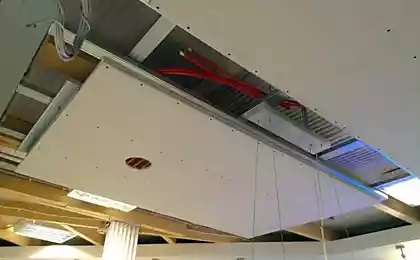638
Heliofloat - floating solar panels
Offshore wind farms are becoming commonplace in many parts of the world, but why not use the sea more and solar panels?
Engineers from the Vienna University of Technology are developing the future of the solar system:. Platform 100 m (330 ft) in length, which are covered with solar panels, and can stay on the water even in a rough sea, thanks to a new system called buoyancy Heliofloat
The technology is still in the development stage, and while scientists describe the current version: Heliofloat uses a flexible, open bottom of the floats, which can withstand even rough sea
.
Solar energy has great potential, if it can not decide to significantly reduce the energy problem in the world, but also one of the factors limiting its general application, is that the space required on the ground is not always available.
Roaming floating solar panels can be assembled in a solar installation of incredible size and production capacity, but the sea is not always easy. Even in relatively quiet areas can suddenly rolled forward with storm waves that will carry a floating platform in a matter of minutes.

Needless to say, such a possibility does offshore floating solar power plants is very risky to invest in, but the Vienna Technical University team claims that their Heliofloat system can support a lightweight platform the size of a football field, in addition, they remain so stable in rough seas, that they can be installed even a parabolic mirror system. This stability is achieved by replacing the conventional flexible floating platforms where the cylinders are installed with an open bottom, which probably absorb, rather than absorb the energy of the waves.
"The key point is that Heliofloat maintained open by floating devices," explains Markus Haider (Markus Haider) from the Institute of Energy Systems and Thermodynamics. "In the case where a platform is mounted on the air-filled, closed containers, the design must be irrational design heavy and robust in order to be able to withstand large waves».
In practice Heliofloat platform is based on the number of cylinders, made of soft, flexible material, the bottom of which is open seawater ballast tanks, like a submarine. If air is trapped inside the cylinder is compressed by the water pressure to act as a shock absorber. At the same time, the cylinder side as deformed shock waves, so they consume less power than hard floats. They are designed so that when assembled together, will allow the platform to ride out the rough sea, while remaining stable.
A subsidiary company of the same name, the University team is exploring other applications for the technology Heliofloat to find partners and investors. These applications also include desalination plants, the extraction of biomass, protection of lakes by evaporation without disturbing the ecosystem of flora and fauna, akvafermy, rest, and maybe even a house.
Engineers from the Vienna University of Technology are developing the future of the solar system:. Platform 100 m (330 ft) in length, which are covered with solar panels, and can stay on the water even in a rough sea, thanks to a new system called buoyancy Heliofloat
The technology is still in the development stage, and while scientists describe the current version: Heliofloat uses a flexible, open bottom of the floats, which can withstand even rough sea
.

Solar energy has great potential, if it can not decide to significantly reduce the energy problem in the world, but also one of the factors limiting its general application, is that the space required on the ground is not always available.
Roaming floating solar panels can be assembled in a solar installation of incredible size and production capacity, but the sea is not always easy. Even in relatively quiet areas can suddenly rolled forward with storm waves that will carry a floating platform in a matter of minutes.

Needless to say, such a possibility does offshore floating solar power plants is very risky to invest in, but the Vienna Technical University team claims that their Heliofloat system can support a lightweight platform the size of a football field, in addition, they remain so stable in rough seas, that they can be installed even a parabolic mirror system. This stability is achieved by replacing the conventional flexible floating platforms where the cylinders are installed with an open bottom, which probably absorb, rather than absorb the energy of the waves.
"The key point is that Heliofloat maintained open by floating devices," explains Markus Haider (Markus Haider) from the Institute of Energy Systems and Thermodynamics. "In the case where a platform is mounted on the air-filled, closed containers, the design must be irrational design heavy and robust in order to be able to withstand large waves».
In practice Heliofloat platform is based on the number of cylinders, made of soft, flexible material, the bottom of which is open seawater ballast tanks, like a submarine. If air is trapped inside the cylinder is compressed by the water pressure to act as a shock absorber. At the same time, the cylinder side as deformed shock waves, so they consume less power than hard floats. They are designed so that when assembled together, will allow the platform to ride out the rough sea, while remaining stable.
A subsidiary company of the same name, the University team is exploring other applications for the technology Heliofloat to find partners and investors. These applications also include desalination plants, the extraction of biomass, protection of lakes by evaporation without disturbing the ecosystem of flora and fauna, akvafermy, rest, and maybe even a house.























